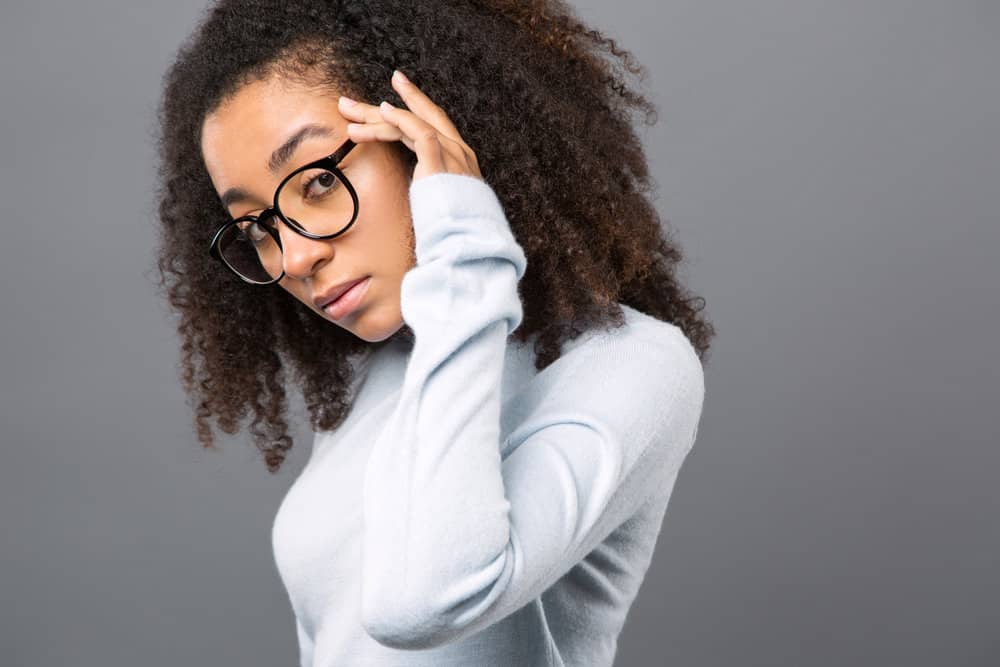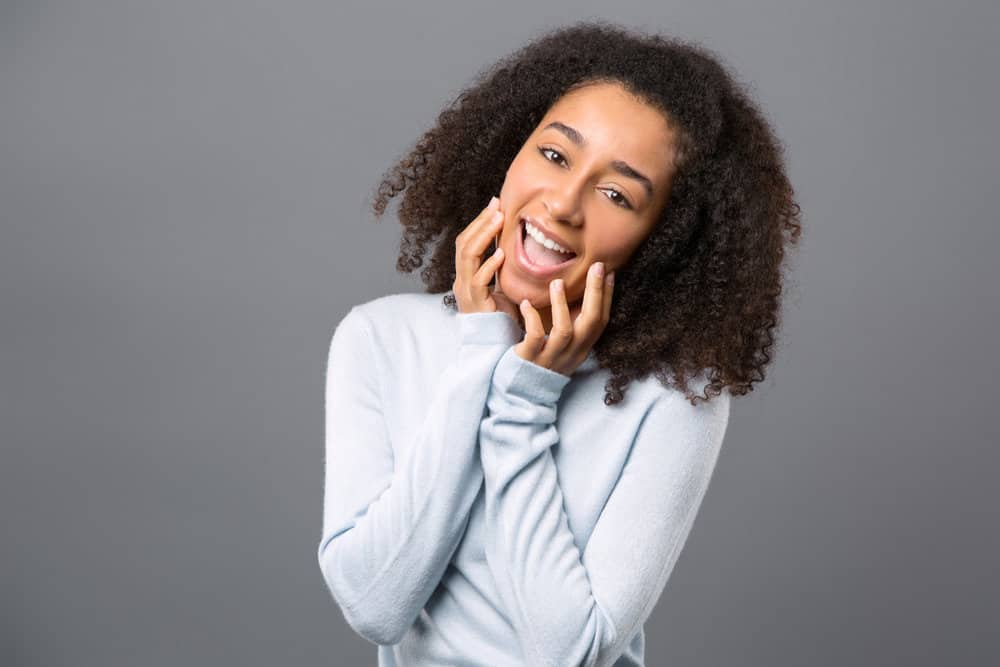
So, you’ve decided to take the plunge and finally dye your hair that stunning shade you’ve had your eye on. As you apply the color to your hair, you quickly realize that your scalp is on fire.
Is that supposed to happen? Is hair dye supposed to burn? If you want to find out the answer to that and more, just keep reading!
In this article, we’re going to look at what happens when you dye your hair and explain if a burning scalp and discomfort are normal reactions or an indication that something is wrong.
Table of Contents
Is Hair Dye Supposed to Burn?
Hair dye can burn, but it shouldn't when used correctly. Although it's easy to overlook, many hair dyes are highly toxic. They contain a variety of caustic chemicals, including hydrogen peroxide and ammonia, that break down the protein bonds in your strands and lift your hair cuticles.
Then, once a hair cuticle has been opened, hair dyes deposit color inside. While this gives you vibrant, long-lasting color, it can also lead to discomfort and scalp injury.
The chemicals in hair dye are not only strong enough to penetrate the hair’s structure, but they are also strong enough to do some real damage to your skin.
Even if you try to keep the dye on just your hair, some of the chemicals can spread onto your skin and lead to minor burning, itching, or redness. While some discomfort is entirely normal, a severe reaction should be treated immediately as a medical emergency.

It's important to note that while most allergic reactions occur immediately after exposure, it can sometimes take hours, or even days, for symptoms to show.
Those are called delayed allergic reactions. So if you’re experiencing pain or discomfort and have recently dyed your hair, there’s still a good chance that the color is responsible.
How Long Does an Allergic Reaction to Hair Dye Last?
How long your allergic reaction lasts depends on a few factors, including the amount of time the dye was left on, the severity of the irritation, and whether or not you treated your symptoms.
If not treated early, reactions last between 2 to 7 days, although in some unfortunate cases, you can see signs of irritation well after a few weeks.
This is the reason why seeking medical treatment is so critical. The sooner you start treating your symptoms, the faster you’ll be able to find relief.

How to Prevent a Chemical Burn From Hair Dye
Now that you know that hair dye can burn you, you’re probably wondering what you can do to prevent it. Fortunately, there are a few simple steps you can take to dramatically improve your experience and keep you and your hair safe.
Here are a few easy ways to prevent dye-related chemical burns.
Protect Your Scalp and Skin
As the name suggests, hair dyes are formulated for hair. Despite this, they often find their way onto your scalp, particularly if you’re applying your hair color all over.
Your skin is more sensitive to the chemicals, so you should take preventative measures by avoiding exposure as much as possible.
Before applying your hair color, smear a thin coating of petroleum jelly along your hairline and the tops of your ears. You should also wear gloves and tuck an old towel into the neck of your shirt to protect against splatters.

Use Gentle Hair Dyes
Unfortunately, many brands of hair color contain toxic chemicals. These ingredients are effective and help the dye penetrate and color your hair. They may also be used to achieve some of the vibrant shades you see on the shelves.
However, some of these ingredients are linked to higher rates of chemical burns and reactions. So before you purchase a bottle of hair dye, scan the ingredient list and try to avoid ones that contain hazardous ingredients like:
- Paraphenylenediamine (PPD)
- Metallic salts
- DMDM Hydantoin
- Para-toluenediamine (PTD)
- Quaternium-15
- Resorcinol

Do a Patch Test
Did you know that many dye-related burns on the scalp can be avoided by doing a simple patch test? A patch test is done to determine whether or not a substance will cause an allergic reaction.
It’s a preventative measure that can be highly effective in preventing chemical burns. Before you apply the color to your hair, mix a small amount of the hair dye in a nonmetal container.
Then, use a Q-tip to apply the hair color to the crook of your elbow or right behind your ear. Wait for the product to dry, and wipe it off.
Wait to dye your hair for at least 48 hours, which will give you enough time to see if your skin shows signs of an adverse reaction. Some of the symptoms to look out for include:
- Redness
- Itching
- Burning
- Bumps

Follow the Instructions Closely
Whenever you apply chemicals to your hair, the most important thing you can do is to read and stick to the instructions. Even if you have experience coloring your own hair, the directions can vary from product to product.
Following the directions dramatically decreases your chances of experiencing burns and other forms of skin irritation. In fact, allergic reactions are not the leading cause of dye-related injuries.
Instead, most hair dye-related chemical burns are caused by not doing a patch test, leaving the product on your hair too long, or using a developer that is too strong.

How Do You Treat a Burn From Hair Dye?
No matter how many safety precautions you take, there’s always a chance that some of the dye will find its way to your skin. So in this section, we’ll take a look at a few different ways you can treat a mild chemical burn from hair dye.
Treat It With Over-The-Counter Remedies
If your post-dye symptoms are mild, over-the-counter treatments may be enough to soothe irritation and keep it from worsening. Here are a few remedies that can help with hair dye reactions:
- Antihistamines
- Antibiotic ointments
- Burn creams
- Steroid creams

Seek Medical Attention
Depending on the severity of your reaction, your best bet may be to reach out to a medical professional. Chemical burns can reach your deepest skin layers and cause lasting pain and even an infection.
So if you think you’re showing signs of a severe reaction, like vomiting or weakness, don’t hesitate to contact a medical professional or call 911.
Use a Soothing DIY Treatment
Hair dye burns are relatively common, so there are a number of tried and true DIY treatments that you can use to find relief. And most of these treatments are color-safe, so you can treat your burns without ruining your color.
- Aloe vera gel
- Petroleum jelly
- Vitamin E

Rinse Your Hair Immediately
Although some mild discomfort is normal, severe pain is a sign that you’re having an adverse reaction. If your discomfort is more than mildly painful, immediately rinse the dye off with cool water, so it doesn’t get worse. Then, shampoo your hair two or three times to remove all of the leftover hair color.
Avoid Harsh Products
If you’ve experienced chemical burns, it's essential that you avoid anything that can further aggravate your scalp. Stay away from medicated shampoos, like dandruff shampoo, and only wash your hair as much as necessary.
- Why Do Hairdressers Not Like Box Dye?
- Does Box Dye Damage Hair?
- How Long Can Hair Dye Sit Out After Mixed
Although it can initially be alarming, mild burning while coloring your hair isn’t always a reason for concern. However, if you notice your symptoms worsening, don’t hesitate to contact a qualified medical professional.
You’ll want to treat and correct the burns before they lead to severe health consequences. And with that, we hope this article has answered your questions and provided you with the information you were after.




